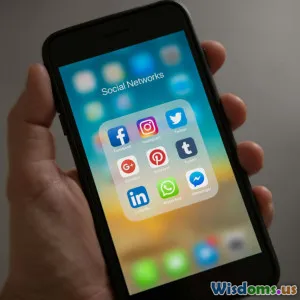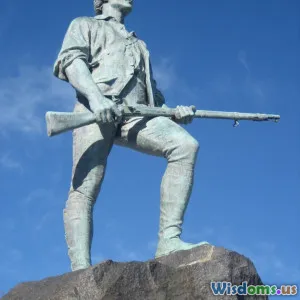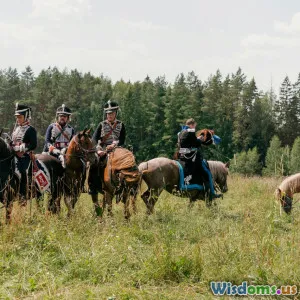
From Tea to Twitter How Communication Drives Revolutionary Change
8 min read Explore how communication from historic tea protests to Twitter sparks revolutionary change worldwide. (0 Reviews)
From Tea to Twitter: How Communication Drives Revolutionary Change
Communication is the lifeblood of revolutionary movements. Whether whispered in taverns, inked on pamphlets, or broadcast across digital platforms, the methods of sharing ideas have proven pivotal for mobilizing the masses and challenging the status quo. This article delves into the transformative journey of communication technologies, from historic events like the Boston Tea Party to the viral dynamics of Twitter, unveiling how they power revolutionary change.
The Boston Tea Party: A Communication Milestone in Revolutionary America
On December 16, 1773, a bold act of defiance unfolded at Boston Harbor. Colonists, protesting against British taxation without representation, boarded the East India Company’s ships and threw chests of tea into the waters. While the event itself was physical, the power of communication amplified its importance massively.
- Pamphlets and newspapers: The incident was widely reported, sparking discussions throughout the colonies. Newspapers like the Boston Gazette played a crucial role in shaping public opinion.
- Slogans and symbols: Phrases like "No taxation without representation" spread quickly, encapsulating complex grievances into memorable calls to action.
This event showcases early American revolutionaries’ understanding that to challenge a powerful empire, messages needed to resonate widely and be propagated persistently. Such strategic communication galvanized disparate colonial groups into a unified movement.
The Printing Press and the Rise of Revolutionary Ideas
The printing press, invented in the 15th century, had matured by the 18th century into a revolutionary communication tool. It enabled rapid dissemination of ideas across broad audiences:
- Thomas Paine’s "Common Sense": Published in 1776, this pamphlet controversially challenged monarchical rule and cited Enlightenment philosophy. It’s estimated that over 120,000 copies circulated in America within months—a staggering reach for the era—influencing public sentiment deeply.
- The spread of revolutionary manifestos: Across Europe and later in the Americas, printed materials fomented awakening in political consciousness.
Research by historian Robert Darnton indicates that such print culture created an "information commons" where citizens could debate ideas and form collective identities crucial for revolutions.
Radio and Television: The Mid-20th Century Revolution in Communication
Fast forward to the 20th century, radio and television revolutionized communication again by enabling major sections of the population to receive synchronized messages in real-time:
- The Civil Rights Movement (United States): Televised coverage of protests, especially violent crackdowns, shifted public opinion nationwide. The brutal images from events like the Selma marches galvanized sympathizers and pressured political leaders.
- The Iranian Revolution (1979): Although limited by strict state controls, radio broadcasts by exiled leaders and underground groups helped coordinate resistance against the Shah’s regime.
These electronic media fostered immediacy and emotional connection unparalleled by printed texts. The visual and auditory dimensions reinforced solidarity and urgency.
Twitter and the Digital Age: Revolution at the Speed of a Tweet
The 21st century brought social media platforms that catapulted communication speed and democratized content creation:
- The Arab Spring (2010-2011): Twitter, Facebook, and YouTube were instrumental. Activists used hashtags like #Jan25 to coordinate protests that toppled governments in Tunisia and Egypt.
- Black Lives Matter: Movements have mobilized globally through viral hashtags and live-streamed events, enabling rapid awareness and fundraising.
Twitter’s real-time, concise messaging empowers participants to spread slogans, share evidence of injustices, and build global solidarity all within moments. For example, during Egypt’s 2011 revolution, social media enabled organizers to assess crowd sizes and police movements dynamically.
Communication as the Catalyst: Why It Matters
The thread tying these examples together is clear: communication doesn't just accompany revolutionary change; it enables it.
- Narrative framing: Leaders craft compelling narratives that inspire action.
- Community building: Communication forms networks of individuals and organizations with shared goals.
- Information dissemination: Rapid and broad information circulation increases participation and resilience against repression.
- Adaptability: New platforms allow movements to circumvent censorship and adapt strategies.
Dr. Manuel Castells, a noted sociologist, writes that modern revolutions represent "networks of communication" where the flow of information directly translates to political power.
Challenges and Risks in Communication-Driven Revolution
While communication technologies offer immense potential, they also represent double-edged swords:
- Misinformation and propaganda: False narratives can distort realities, undermine movements, or trigger violence.
- Surveillance and repression: Authoritarian regimes use digital tools to monitor activists.
- Echo chambers: Algorithms sometimes reinforce polarization instead of dialogue.
For instance, the 2016 US elections exemplified how social media could be manipulated to spread disinformation and exacerbate divisions.
Conclusion: From Revolutionary Tea Parties to Tweets—The Unstoppable Force of Communication
The evolutionary leap from impassioned speeches in colonial taverns to viral tweets underscores one unequivocal truth: communication is central to revolutionary change. By adapting and leveraging prevailing communication tools, revolutionaries break boundaries—inspiring participation, shaping narratives, and propelling history.
As technology evolves, new forms of communication will continue to empower citizens worldwide. The challenge is to harness these tools responsibly, authentically, and inclusively to shape just societies. Understanding the historic continuum from tea to Twitter offers invaluable lessons on the enduring power of words, images, and voices in the human pursuit of freedom and equity.
References & Further Reading:
- Robert Darnton, The Literary Underground of the Old Regime (1982)
- Manuel Castells, Networks of Outrage and Hope: Social Movements in the Internet Age (2012)
- Kate Starbird, "Digital Disinformation Warfare," Science (2019)
- Jeffrey M. Berry and Sarah Sobieraj, The Outrage Industry (2014)
Rate the Post
User Reviews
Popular Posts




















